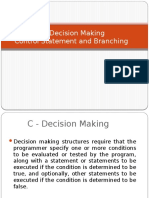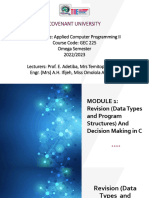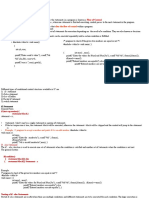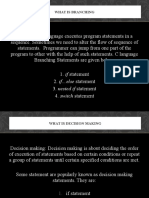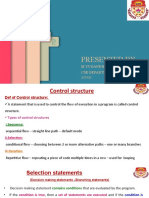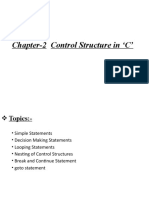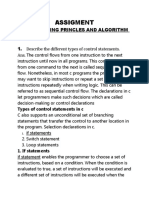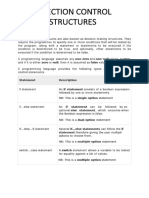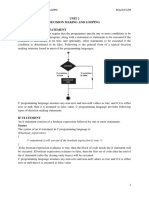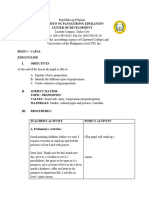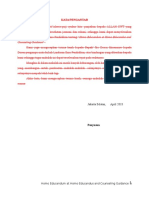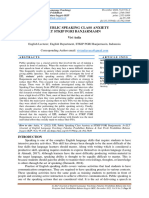0% found this document useful (0 votes)
9 views19 pagesConditional
The document discusses decision-making structures in the C programming language, outlining the necessity for conditions to be evaluated and corresponding actions to be executed based on those conditions. It details various types of control statements, including if statements, if...else statements, nested if statements, if...else if...else statements, switch-case statements, and the ternary operator. Additionally, it provides syntax and rules for using these statements effectively in programming.
Uploaded by
gamezoneid2Copyright
© © All Rights Reserved
We take content rights seriously. If you suspect this is your content, claim it here.
Available Formats
Download as PDF, TXT or read online on Scribd
0% found this document useful (0 votes)
9 views19 pagesConditional
The document discusses decision-making structures in the C programming language, outlining the necessity for conditions to be evaluated and corresponding actions to be executed based on those conditions. It details various types of control statements, including if statements, if...else statements, nested if statements, if...else if...else statements, switch-case statements, and the ternary operator. Additionally, it provides syntax and rules for using these statements effectively in programming.
Uploaded by
gamezoneid2Copyright
© © All Rights Reserved
We take content rights seriously. If you suspect this is your content, claim it here.
Available Formats
Download as PDF, TXT or read online on Scribd
/ 19
